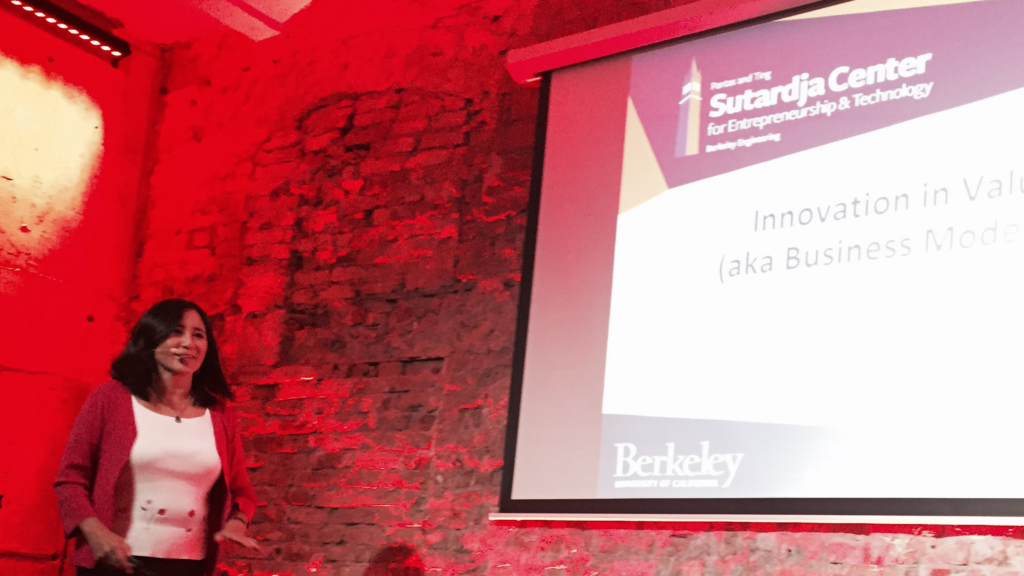Business Model Innovation – Moving from Value Proposition to Value Extraction

The first step in building a successful start-up is developing the Value Proposition or creating a product or service that provides significant value and benefits to a target customer in addressing the need that they have. In order to build a successful business, the next step is to develop an approach for Value Extraction or making money, reducing costs and creating a profitable business.
When I was working on my MBA degree in the UC Berkeley Haas School of Business evening program, I used to take very neat and detailed notes in each class (good Asian student background). Since my fellow students often missed class because of work obligations, I would make copies of my notes and share it with the absent ones with no thought of getting payment. Years later, when I was listening to the COO of Webvan (well-funded Internet start-up that launched in late 1990’s), he talked about how he always had the entrepreneur spirit, and how he sold copies of his class notes while he was getting his MBA at UCLA. Why didn’t I think of that when I was sharing my notes? Because I was too focused on the Value Proposition, and didn’t think of Value Extraction.
One important factor in figuring the business model is identifying WHO THE CUSTOMER IS. Customers can play different roles, they key ones being the USER, the BUYER, and the PARTNER. Take for instance, home consumption beer in the United States. The primary user is male, while the primary buyer is female (usually wife or girlfriend), and the partner is the retail outlet. If any of these customers are not engaged in the business strategy, then beer sales don’t take place, and no revenue. So it’s critical to understand who all the different customers are in your business, and to develop a strategy and tactics to provide value to each of the different customers. So the beer producer’s advertising campaigns have to reach both the men and the women, and they also have to have a strategy to engage retail outlets to carry their product.
In developing a business model, the key equation to build upon is PROFITS = REVENUES – COSTS. Anything that increases revenues, or decreases costs, thereby increasing the profits will improve the business model. Creative new ways to increase revenues or decrease costs results in a more innovative business models. Over time, new technologies and process emerge, enabling the emergence of new business models. In the 1990’s, the Internet took hold of the world, and spawned new Internet-based businesses like Amazon, eBay, and more. In the 2000’s, wireless devices became mainstream and mobile apps and content businesses like app-stores like iTunes and Spotify emerged and thrived, while in the 2010’s, smart phones with even more capabilities like location based services resulted in companies like UBER and restaurant reservation apps. Often these new companies thrived because of their innovative business models versus because of innovative new technologies. UBER leveraged existing mobile device trends and existing location based technologies to build a business which created new revenue streams for car owners with excess capacity and time and UBER getting a cut of that business. Their business model was the innovation in utilizing excess capacity to generate revenues, not their technology.
With the rise of Internet enabled devices in the areas of consumer, enterprise, and industrial, a lot of data is being collected which can be analyzed and used to predict trends and outcomes or to run processes. This has given rise to Data Monetization as a popular business model. Google keeps offering free services, but is it really free? In exchange for the free services, Google is collecting consumer behavior data from all of us users and monetizing by selling targeted advertising to companies trying to reach us. Another historical example of creative business model innovation is how grocery stores initially installed bar code scanners as a way to manage inventory and bar code scanners resulted in being a cost center to the business. Then the grocery stores figured out that the in addition to collecting data on inventory levels, they were collecting valuable data on consumer buying trends. So the grocery stores packaged the data collected on buying trends and sold it to the consumer goods companies. Amazing instance of transforming the bar code scanner from a cost center into a revenue center.
One of my favorite examples of an innovative business model transformation is the gaming broadcast service Twitch. It spun out of Justin.tv, a “free” streaming video service struggling to survive because it hadn’t come up with a profitable business model. One of Justin.tv’s executives then developed a concept to utilize Justin.tv’s streaming video technology for a service for gamers to go online to video broadcast their game-play where other games could login to watch them play. Top gamers on Twitch easily have up to 10,000 viewers watching them play which provided a captive audience for targeted advertising. Revenues skyrocketed and Twitch was acquired by Amazon in 2014 for close to $1 billion. Such an amazing example of transforming an unprofitable business to a highly profitable one by innovating the business model and how to generate revenues.
Learn more about Business Model Innovation at the next Berkeley Method of Entrepreneurship Boot-camp scheduled for August 15 – 19, 2016 (Course IEOR 192). More info at: https://scet.berkeley.edu/bmoe-
See Gigi Wang give a talk on Business Model Innovation in Berlin, Germany, on April 14, 2016:
Learn more about Business Model Innovation at the next Berkeley Method of Entrepreneurship Boot-camp scheduled for August 15 – 19, 2016 (Course IEOR 192). More info at: https://scet.berkeley.edu/bmoe-2016/
